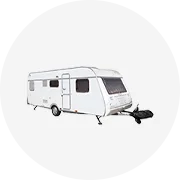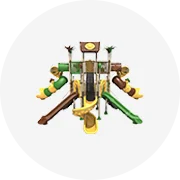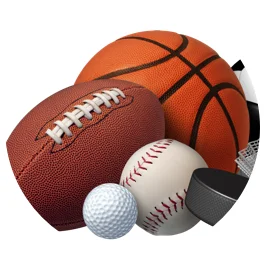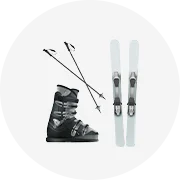Types of BMX Tricycles
A BMX tricycle is a three-wheeled bicycle specifically designed for off-road use and racing on dirt tracks featuring jumps, hills, and tight corners. Unlike traditional bicycles, BMX tricycles combine the agility of a BMX bike with the stability of three wheels. They feature reinforced frames for durability, oversized handlebars for better control, and wide tires for improved traction across varied terrain.
The unique design of BMX tricycles allows riders to maintain balance during high-speed turns and technical maneuvers. These trikes are popular among children and adults alike, offering both recreational enjoyment and competitive racing opportunities. With their robust construction and versatile performance capabilities, BMX tricycles cater to different riding styles and environments.
Standard BMX Trikes
These are the most common type of BMX tricycles, known for their simple yet effective design. Featuring a sturdy metal frame, two front wheels, and one rear wheel, standard BMX trikes provide excellent stability for casual riding on smooth surfaces like paved paths or streets.
Advantages
- Easy to control and maneuver
- Durable construction suitable for beginners
- Low maintenance requirements
- Affordable pricing options available
Limitations
- Limited performance on rough terrain
- Not ideal for advanced tricks or racing
- Fewer customization options
Best for: Recreational riders, beginners, and those looking for stable neighborhood transportation
Race BMX Trikes
Engineered for speed and competition, race BMX trikes focus on lightweight materials and aerodynamic design. These trikes often have quick-release wheels for fast changes and adjustable seat posts for optimal rider positioning during races.
Advantages
- Optimized for track racing performance
- Lightweight yet strong frame construction
- Quick-release components for easy adjustments
- Enhanced aerodynamics for higher speeds
Limitations
- Higher cost compared to standard models
- Less comfortable for long-distance riding
- Requires regular maintenance
Best for: Competitive racers, track enthusiasts, and serious BMX athletes
Freestyle BMX Trikes
Designed specifically for performing stunts and tricks, freestyle BMX trikes are built with reinforced frames and forks to withstand impacts from jumps, grinds, and other extreme maneuvers. These trikes typically feature tall handlebars and elevated pedals to prevent ground contact during complex tricks.
Advantages
- Robust build for impact resistance
- Ideal for skate parks and urban riding
- Excellent maneuverability for tricks
- High-quality components for durability
Limitations
- Heavier than racing models
- More expensive due to specialized parts
- Not suited for casual commuting
Best for: Trick riders, stunt performers, and skate park enthusiasts
Transition BMX Trikes
Offering flexibility across multiple disciplines, transition BMX trikes are versatile machines that can adapt to various riding conditions. Whether you're racing one day and doing tricks the next, these trikes offer modular features such as removable pegs and convertible frames.
Advantages
- Multi-purpose design for diverse riding styles
- Customizable setup options
- Good value for money in the long run
- Adaptable to both street and trail environments
Limitations
- Slightly heavier due to added components
- May not excel in any single discipline
- Potentially more complex maintenance needs
Best for: Riders who enjoy switching between racing, freestyle, and casual riding
| Type | Main Use | Weight | Sturdiness | Best For |
|---|---|---|---|---|
| Standard BMX Trike | Recreational Riding | Moderate | Good | Beginners, casual riders |
| Race BMX Trike | Track Racing | Lightweight | Very Good | Competitive cyclists, racers |
| Freestyle BMX Trike | Tricks & Stunts | Heavy-Duty | Excellent | Stunt riders, skate park users |
| Transition BMX Trike | Multifunctional Use | Moderate to Heavy | Good | Versatile riders, mixed-terrain use |
Expert Tip: When selecting a BMX tricycle, consider your primary riding style and environment. For example, if you plan to compete in races, prioritize lightweight frames and aerodynamic features. If you're into performing tricks, invest in a durable freestyle model with reinforced components to withstand repeated impacts.
Specifications and Maintenance of BMX Tricycles
Key Components and Specifications
BMX tricycles are designed for performance, durability, and control, making them ideal for various riding styles such as racing, freestyle, and street riding. Understanding the specifications of each component ensures you choose a trike that matches your needs and enhances your riding experience.
Frame
The frame is the foundation of any BMX tricycle, determining strength, weight, and overall ride quality. Most frames are made from either steel or aluminum. Steel frames are known for their durability and impact resistance, while aluminum frames offer lightweight strength without compromising rigidity.
Frame size is crucial for rider comfort and performance. It should be selected based on the rider’s height and age to ensure proper ergonomics. Additionally, frame geometry plays a significant role in handling characteristics:
- Steep Head Tube Angle: Offers quick, responsive steering—ideal for tricks and tight turns in freestyle riding.
- Slack Head Tube Angle: Provides greater stability at high speeds, commonly found in racing models.
- Low Center of Gravity: Enhances balance and control, especially during stunts and aggressive maneuvers.
Wheels
BMX tricycle wheels must be robust enough to withstand jumps, tricks, and rough terrain. They come in various sizes, typically ranging from 12” to 24”, depending on the model and intended use.
Wheel width also affects performance:
- Narrow Wheels: Offer less resistance and better speed—suitable for racing.
- Wide Wheels: Provide enhanced grip and traction, essential for performing tricks and maintaining control on uneven surfaces.
The material and construction of the rims influence both weight and durability. Reinforced hubs and thick spokes further contribute to the wheel’s ability to handle stress and impact.
Handlebar
Handlebars play a critical role in steering and maneuverability. The design, size, and shape of the handlebars directly affect how the BMX tricycle responds to rider input.
Common types include straight bars, riser bars, and cruiser-style bars. Wider handlebars generally offer more leverage and control, which is particularly beneficial during technical stunts and aggressive riding.
Materials like steel or reinforced aluminum provide the necessary strength without adding excessive weight. Proper bar height and angle also contribute to rider comfort and posture during extended sessions.
Saddle
The saddle is where rider comfort meets functionality. A well-designed saddle supports the rider through jumps, landings, and long rides. Most BMX tricycle saddles are compact and padded for minimal interference with movement while providing adequate support.
Adjustability is key—saddles can typically be raised or lowered to match the rider's leg length and preferred riding style. Lower saddles allow for easier foot placement during tricks, while higher saddles are better suited for cruising or racing scenarios.
Durability is another important factor. Look for saddles with weather-resistant covers and sturdy mounting hardware to ensure longevity under tough conditions.
| Component | Material Options | Performance Considerations |
|---|---|---|
| Frame | Steel, Aluminum | Steel offers superior durability; aluminum provides lighter weight and stiffness. |
| Wheels | Aluminum alloy, Plastic composites | Width and tread pattern affect grip and speed; wider wheels improve control during tricks. |
| Handlebars | Steel, Alloy | Wider bars enhance control; materials impact strength-to-weight ratio. |
| Saddle | EVA foam, Vinyl cover | Padding level affects comfort; adjustability ensures proper fit for different riders. |
Maintenance Best Practices
Regular maintenance not only extends the life of your BMX tricycle but also ensures safety and peak performance. Here are essential maintenance routines every rider should follow:
Important: Always perform a pre-ride check before each session. Ensure all fasteners are tightened to manufacturer specifications, and no components show signs of fatigue or damage. A small issue unchecked today can lead to serious injury tomorrow.
How to Choose BMX Tricycle
Selecting the right BMX tricycle involves evaluating several key factors to ensure a perfect match for the rider's needs, skill level, and intended use. Whether you're shopping for yourself or a child, understanding these considerations will help you make an informed decision that enhances performance, comfort, and durability.
Purpose of Use
The primary purpose of the BMX tricycle is one of the most important considerations. Different models are specifically engineered for various riding styles, including racing, freestyle tricks, and casual recreational use.
- Racing models feature lightweight frames and aerodynamic designs for speed
- Freestyle tricycles include reinforced components for performing tricks and stunts
- Recreational versions prioritize comfort and stability for everyday riding
Pro Tip: Consider future ambitions – choose a model that can grow with the rider’s skill development
Rider Age and Size
Proper fit is crucial for both safety and enjoyment. The tricycle should match the rider's height, weight, and physical development to ensure optimal control and comfort.
- Kids' models (ages 3-8): Typically have 12-16" wheels and lower seat heights
- Youth sizes (ages 9-12): Feature 18-20" wheels with adjustable components
- Adult models: Usually come with 20" wheels and heavier-duty construction
- Weight capacity ratings should exceed rider weight by at least 20%
Measurement Guide: When seated, rider should be able to touch the ground with tiptoes while maintaining proper pedaling position
Frame Material Options
The frame material significantly impacts the tricycle's weight, strength, and longevity. Each material offers distinct advantages depending on usage requirements.
- Aluminum alloy: Lightweight (15-20% lighter than steel), corrosion-resistant, preferred for racing
- Steel: More durable under heavy stress, better shock absorption, ideal for stunt riding
- Chromoly (cro-mo): High-strength steel alloy used in professional-grade bikes
- Hybrid frames: Combine materials for balanced performance characteristics
Durability Note: Steel frames may require additional maintenance in coastal or winter road salt environments
Wheel Size Considerations
Wheel size affects maneuverability, speed, and stability. While 20" wheels are standard, variations exist to accommodate different riding styles and rider sizes.
- Smaller wheels (12"-16"): Faster acceleration, easier for tricks, suitable for young riders
- Standard 20": Optimal balance for most adult riders and purposes
- Oversized wheels (22"+): Improved obstacle clearance and stability at high speeds
- Wider rims increase traction and durability for aggressive riding
Performance Impact: Larger wheels maintain momentum better but require more effort to accelerate
Brake System Comparison
Brake selection affects stopping power, maintenance requirements, and compatibility with riding style. Modern BMX tricycles offer multiple braking options tailored to specific needs.
- Coaster brakes: Foot-pedal activated, low-maintenance, excellent for beginners
- U-brakes: Provide strong stopping power, common on street and park bikes
- Cantilever brakes: Offer better modulation and perform well in varied conditions
- Disc brakes: Superior all-weather performance, increasingly popular on high-end models
Safety Reminder: Always test brake responsiveness before each ride, especially after exposure to moisture or dirt
Budget Planning
BMX tricycles span a wide price range, from entry-level models to professional-grade machines. Establishing a realistic budget helps narrow choices while ensuring value for money.
- Entry-level ($100-$300): Basic features, suitable for casual riding and beginners
- Mid-range ($300-$600): Better components, improved durability for regular use
- High-end ($600+): Professional-grade materials and components for serious riders
- Consider long-term costs: Higher initial investment often reduces replacement frequency
Value Strategy: Prioritize critical components (frame, fork, bearings) over cosmetic upgrades when budgeting
Expert Recommendation: When in doubt between two sizes, opt for the smaller option for children (they'll outgrow it eventually). For adults, always prioritize proper fit over aesthetics. A properly fitting tricycle dramatically improves control, efficiency, and overall enjoyment regardless of the rider's experience level.
| Component | Best For | Pros | Cons |
|---|---|---|---|
| Aluminum Frame | Racing & Speed | Lightweight, Corrosion-resistant | Less forgiving on rough terrain |
| Steel Frame | Freestyle/Stunts | Durable, Shock-absorbing | Heavier, Requires maintenance |
| 20" Wheels | All-around use | Optimal balance, Standard size | Moderate acceleration vs stability |
| Disc Brakes | All Weather Conditions | Excellent stopping power | Higher cost, Complex maintenance |
| Coaster Brakes | Beginners & Kids | Simple design, Low maintenance | Limited modulation control |
DIY Replacement Guide for BMX Tricycles
Replacing parts on a BMX tricycle is an accessible DIY project that can significantly enhance your riding experience while extending the life of your trike. With the right tools, mechanical knowledge, and attention to detail, you can confidently replace key components such as wheels, frames, handlebars, pedals, and bottom brackets.
Safety Warning: Always ensure the trike is stable before working on it—use a stand or secure it upside down on a clean surface. Wear protective gloves and eyewear when handling tools and sharp components.
Essential Tools for BMX Tricycle Repairs
Before starting any replacement work, gather the following tools to ensure smooth progress throughout the process:
- Socket Set: For removing and tightening nuts and bolts of various sizes.
- Wrench Set: Useful for loosening and securing components like hubs and brake rotors.
- Screwdriver Set: Both flathead and Phillips for adjusting accessories and smaller fasteners.
- Chain Tool: Essential for breaking and rejoining chains during drivetrain repairs.
- Torque Wrench: Ensures proper tightness without over-tightening critical components like handlebar clamps and crank arms.
- Allen Key Set: Needed for most modern BMX components including handlebars and headset adjustments.
- Pliers: Ideal for gripping small parts or removing stubborn pins and clips.
- Pedal Wrench: A long-handled wrench specifically designed for pedal removal and installation.
Pro Tip: Organize your tools and hardware in labeled trays or compartments to avoid losing small parts during disassembly. This also helps speed up reassembly later.
Replacing the Wheel
Changing a wheel is a common maintenance task that becomes necessary due to wear, damage, or upgrading to a different size or material. Follow these steps carefully:
- Loosen Fasteners: Use the socket set and screwdrivers to remove wheel nuts and quick-release skewers. If your trike has disc brakes, take extra care not to move the caliper out of alignment.
- Remove Hub Components: Carefully use a wrench and pliers to detach the wheel hub and brake rotor. Keep all bearings and spacers in a safe place if they’re being reused.
- Install New Wheel: Slide the new wheel into place, ensuring the axle sits properly within the dropouts. If using a quick-release system, make sure the lever is on the non-drive side for optimal clearance.
- Reattach Hardware: Reinstall the hub and brake rotor using the same wrench and pliers. Make sure everything is seated correctly before tightening.
- Secure the Wheel: Refit the wheel nuts or quick-release skewers, tightening them evenly and securely. Double-check the wheel spins freely without rubbing against the frame or brakes.
| Component | Recommended Torque (Nm) | Common Mistakes | Special Notes |
|---|---|---|---|
| Wheel Nuts | 18–22 Nm | Over-tightening causing thread damage | Use a torque wrench for consistency |
| Quick-Release Skewer | Hand-tight with firm lever closure | Improper tension leading to wheel wobble | Check manufacturer specs for lever positioning |
| Brake Rotor Bolts | 5–8 Nm | Using incorrect bolt length | Always use stainless steel bolts to prevent corrosion |
Replacing the Frame
Frame replacement is typically done for upgrades or after significant damage. It requires careful disassembly and reassembly of multiple components:
- Remove Handlebars: Loosen the stem bolts with an Allen key and slide the handlebars off the steerer tube.
- Detach Pedals: Use a pedal wrench to unscrew the old pedals from the crank arms. Remember that the left pedal is reverse-threaded!
- Remove Bottom Bracket: Using a compatible socket set, remove the bottom bracket and chainset assembly.
- Take Off Accessories: Unscrew the mudguard, basket, and other mounted items with a screwdriver for transfer to the new frame.
- Disconnect Brakes & Derailleurs: Carefully disconnect the brake calipers and derailleurs using a wrench and pliers. Label cables and housing for easier reinstallation.
- Transfer Components: Move all usable parts like cranks, headset, seat post, and rear dropout hardware to the new frame.
- Reassemble in Reverse: Begin by installing the headset, fork, and bottom bracket, then progressively add wheels, drivetrain, and controls. Ensure every bolt is torqued to specification.
Assembly Tip: Take reference photos at each stage of disassembly. These will be invaluable when rebuilding the trike with the new frame.
Replacing Handlebars
Handlebar replacement allows for customization of grip position and style. It's one of the simpler tasks but still requires precision:
- Loosen Clamps: Use an Allen key to loosen the handlebar clamps on the stem. You may need to adjust cable tension before completely removing the bars.
- Install New Bars: Place the new handlebars into the stem, making sure they are centered and aligned with the front wheel. Adjust height and angle as desired before tightening.
- Tighten Securely: Gradually tighten the stem bolts in a crisscross pattern to ensure even pressure and prevent bending the handlebar.
Replacing Pedals
Whether upgrading or replacing worn-out pedals, this task is straightforward but crucial for safe operation:
- Remove Old Pedals: Use a pedal wrench to unscrew the existing pedals. The right pedal is standard-threaded (counter-clockwise to loosen), while the left pedal is reverse-threaded (clockwise to loosen).
- Install New Pedals: Thread the new pedals into the crank arms by hand first to avoid cross-threading. Finish tightening with the pedal wrench, ensuring they are snug but not overly tightened.
Replacing the Bottom Bracket
The bottom bracket connects the crankset to the frame and plays a vital role in drivetrain efficiency. Replacing it involves precision tools:
- Remove Old Unit: Use a dedicated bottom bracket tool to extract the old unit from the frame. Depending on the type, this could involve pressing or threading it out.
- Install New Unit: Insert the new bottom bracket into the frame. Some types require press-fit installation while others thread in by hand or with a special tool.
- Reconnect Chainset: Reattach the crankset to the spindle of the new bottom bracket and torque according to specifications. Test for smooth rotation without play or binding.
Maintenance Reminder: After completing any part replacement, always test ride the trike at low speeds in a controlled environment to check for unusual noises, resistance, or misalignment.
Final Tip: Keep a maintenance log to track which parts were replaced and when. This helps plan future replacements and keeps your BMX trike in top condition year-round.
BMX Tricycles Frequently Asked Questions
Yes, BMX tricycles are absolutely suitable for adults. Modern adult BMX tricycles are specifically engineered to accommodate the weight, strength, and riding style of mature riders. These trikes feature reinforced frames made from durable materials like chromoly steel or high-tensile alloys that can withstand aggressive riding and heavier loads. They also come with larger wheel sizes (typically 20 inches), adjustable handlebars, and comfortable saddles designed for adult body dimensions.
Many adults enjoy BMX tricycles for:
- Recreational riding at skate parks or local trails
- Performing tricks and stunts in a safe environment
- Commuting short distances with style
- Staying active and improving physical fitness
The three-wheel design provides exceptional stability compared to traditional two-wheel BMX bikes, making them particularly appealing to beginners or those seeking confidence-boosting rides.
While BMX tricycles are primarily designed for performing tricks and stunts rather than speed-focused racing, they can certainly be used for casual racing in appropriate environments. Their unique three-wheeled configuration offers excellent cornering stability and instant power delivery, which can be advantageous in certain racing scenarios.
Potential racing applications include:
- Flatland competitions on smooth surfaces
- Urban obstacle courses with technical elements
- Fun races at skate parks among friends
- Kids' racing events where safety is paramount
For serious competitive racing however, specialized racing tricycles exist with optimized aerodynamics, lightweight frames, and geared systems designed specifically for speed. These differ significantly from standard trick-oriented BMX trikes in both design and functionality.
One of the most appealing aspects of BMX tricycles is their extensive customization potential. Riders can personalize almost every component to match their preferences, riding style, and aesthetic tastes. Customization options include but are not limited to:
- Gear Systems: Upgrading from single-speed setups to multi-speed drivetrains for varied terrain handling
- Tires: Swapping out stock tires for different sizes, treads, or compounds based on intended use (street, park, dirt)
- Frames: Replacing standard frames with lighter or stronger alternatives made from advanced alloys
- Handlebars: Installing higher, wider, or differently shaped bars for better control during tricks
- Brakes: Upgrading braking systems for improved stopping power and modulation
- Aesthetic Elements: Adding custom paint jobs, decals, LED lights, or colored grips
When customizing, it's important to maintain compatibility between components and ensure proper installation for safety. Many BMX specialty shops offer customization services or can guide you through selecting appropriate aftermarket parts.
Custom builds allow riders to create truly unique machines that reflect personal style while optimizing performance characteristics for specific riding disciplines.

































































